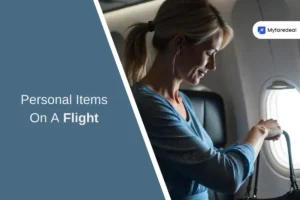
Some airlines allow passengers to travel with chickenpox under some rules and regulations. Chickenpox remains contagious up to seven days after the first spots show up. This fact explains why airlines maintain strict rules about flying while infected. Most major airlines have specific waiting periods before letting infected passengers board. Meanwhile, British Airways, EasyJet, and Virgin Atlantic require a 6-7 day wait after the last spots appear. Jet2 and TUI take extra precautions and need a doctor’s letter to confirm the passengers are not contagious anymore.
The strict rules make perfect sense because chickenpox spreads quickly through respiratory droplets and contact with blister fluid. Airlines can deny boarding to anyone who appears contagious, so understanding their policies is important. Your travel plans might face disruption from an unexpected chickenpox diagnosis. This article will guide you through airline-specific rules to avoid any problems.
Understanding Chickenpox And Travel Risks
Chickenpox (varicella) needs a good look before you travel since it spreads so easily. A clear picture of the illness helps you decide if flying is safe for everyone on board.
What Is Chickenpox And How Long Does It Last?
Chickenpox is an acute infectious disease that comes from the varicella-zoster virus (VZV). The signs show up 10 to 21 days after someone catches the virus. Meanwhile, many people first get flu-like symptoms. The classic chickenpox rash appears next – red spots turn into itchy, fluid-filled blisters all over the body. However, these blisters dry up into crusts and heal.
Most people get better within 1 to 2 weeks. The rash usually lasts around 5 to 10 days. New spots can pop up in waves for 3 to 5 days after the rash first shows.
When Chickenpox Is Contagious?
This matters a lot if you plan to travel: someone with chickenpox can spread it most easily from 1 to 2 days before the rash appears until all spots have crusted over. This usually takes 5 to 6 days after the rash starts. Meanwhile, the virus spreads in several ways:
- Direct contact with blister fluid
- Breathing in droplets from coughs or sneezes
- Sharing a room with an infected person for 15+ minutes
The virus spreads very easily—about 90% of people living with someone who has chickenpox will catch it too. Even vaccinated people who get a mild case can spread it, though they’re only about one-third as contagious as those without the vaccine.
Airlines must protect their passengers, especially babies, pregnant women, and people with weak immune systems. Most airlines won’t let you fly during the contagious period to stop the virus from spreading in the tight space of the flight carrier.
Airline Policies And Flight Regulations For Chickenpox
Airlines of all sizes have strict rules about flying with chickenpox. Additionally, travellers should know these rules if a doctor has diagnosed them with this highly contagious condition. However, The law allows airlines to stop anyone with visible signs of contagious illness from boarding. Aircraft cabins create perfect conditions for diseases to spread between passengers.
Most airlines ask passengers to wait about 7 days after their last new spots appear. All existing spots must be crusted or scabbed over before flying.
Documentation Required By The Airlines
Meanwhile, Each airline has its own specific rules regarding travel while having this contagious disease:
| Airline | Waiting Period | Documentation Required |
| British Airways | 6 days after the last spots | Doctor’s letter confirming non-contagious status |
| Ryanair | 7 days after the last new spots | Travellers may require medical confirmation |
| EasyJet | 7 days after the last new spots | No specific documentation is mentioned. |
| Virgin Atlantic | 7 days after the last new spots. Meanwhile, the spots have crusted/scabbed over and the passenger feels well and has no fever. | The passengers can also contact the airline’s special assistance team to get information about the documentation. |
| TUI | 7 days after the last new spots. | Fitness to fly certificate |
| Jet2 | 7 days after the first spots appeared. | “Fit to Fly” letter from GP |
Most airlines want medical proof that you’re no longer contagious. Meanwhile, this proof usually includes:
- Your GP’s letter confirming all blisters have crusted over
- A formal “Fit to Fly” certificate
- Papers issued within six days before your flight
Some airlines like Qantas and Norwegian are extra careful. They won’t let you board with any visible chickenpox signs unless you have proper medical clearance. Meanwhile, the airport staff might stop the passengers from boarding if they show up with visible chickenpox symptoms without the right papers. However, these rules apply to both adults and children.
Important Note: The passengers should call their airline before travelling to check their current chickenpox policy. Rules can change and might be different from what’s mentioned here.
Planning Travel After Chickenpox Diagnosis
A chickenpox diagnosis requires careful planning before you reschedule or continue with your travel plans. Timing plays the most important role – you’ll need to wait until you’re no longer contagious. Meanwhile, medical documentation proves you’re not contagious once your chickenpox spots have fully crusted over. Many airlines and destinations need this fitness-to-fly certificate before they let you board. However, airlines have different timing requirements for post-chickenpox travel.
Whereas, British Airways lets the passengers travel 6 days after their final crop of spots appears, as long as they’ve crusted over. Most other airlines require a 7-day wait. Every carrier’s common requirement states that all lesions must be dried and scabbed. However, your destination country’s entry rules for contagious diseases might differ. The United States’ strict policies govern arrivals with communicable illnesses. Additionally, travellers should check their destination’s specific regulations well in advance.
Travel insurance is a vital planning factor. Additionally, Passengers should consider buying insurance when booking their trip, rather than just before leaving. It will give a safety net for chickenpox-related cancellations. This could save you money if anyone in your group gets the virus.
Chickenpox symptoms last 5-7 days in mild cases and typically clear up within 1-2 weeks. Therefore, the airlines still need medical proof that confirms you’re not contagious. This letter’s issue date should be within six days of your flight.
Conclusion
Air travel with chickenpox just needs proper planning and following airline policies. Additionally, the airlines require passengers to wait at least 7 days after their last spots appear. Meanwhile, each carrier’s specific requirements may differ. However, a doctor’s documentation becomes crucial for post-chickenpox travel plans. Whereas, you can also contact the airline’s special assistance or its customer service and get guidance in these types of situations.







